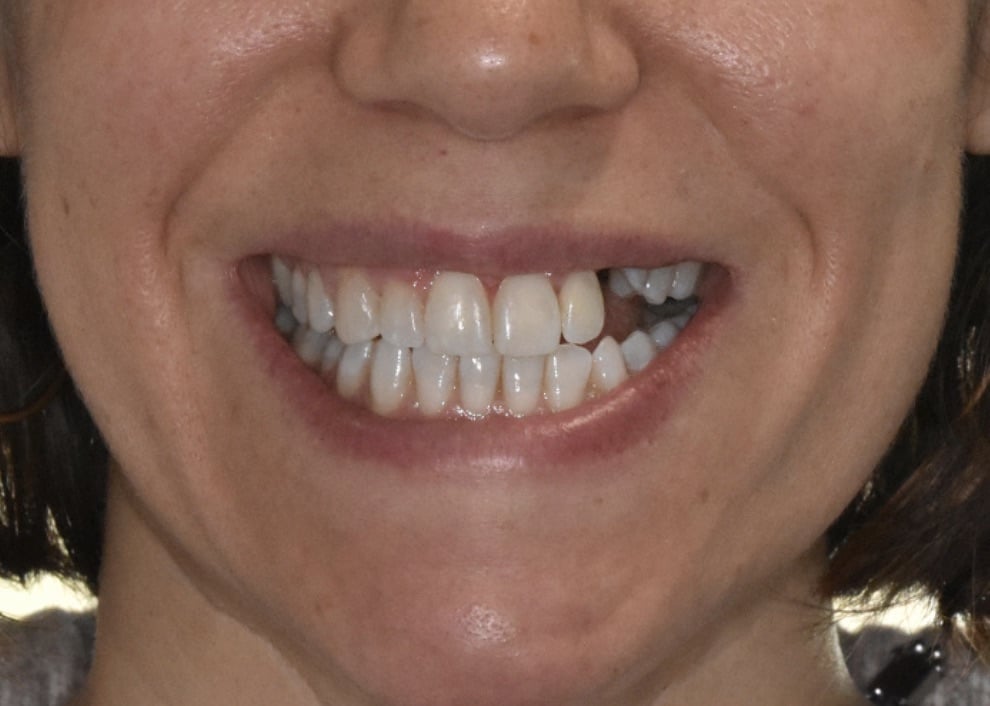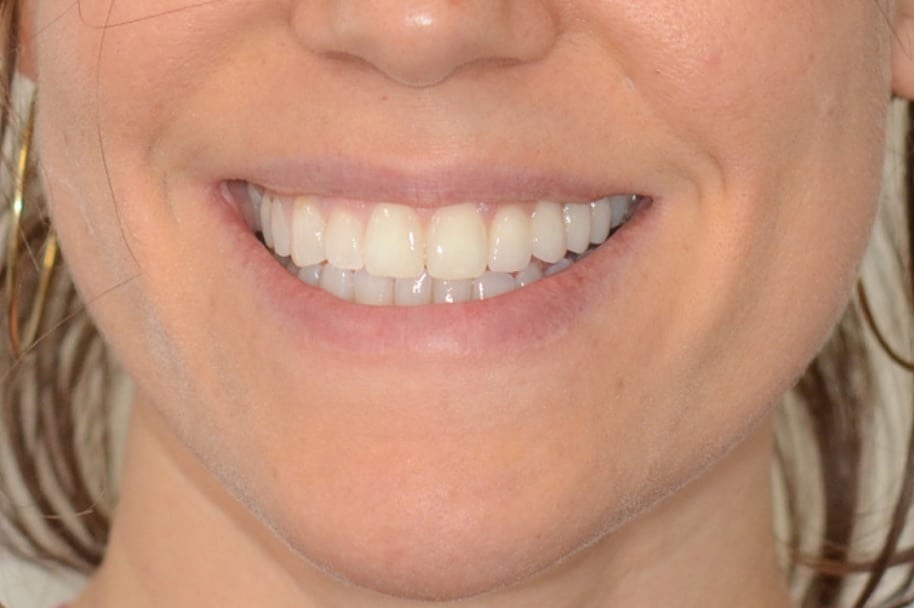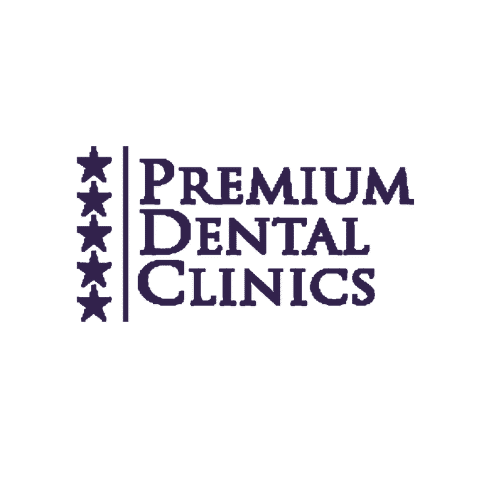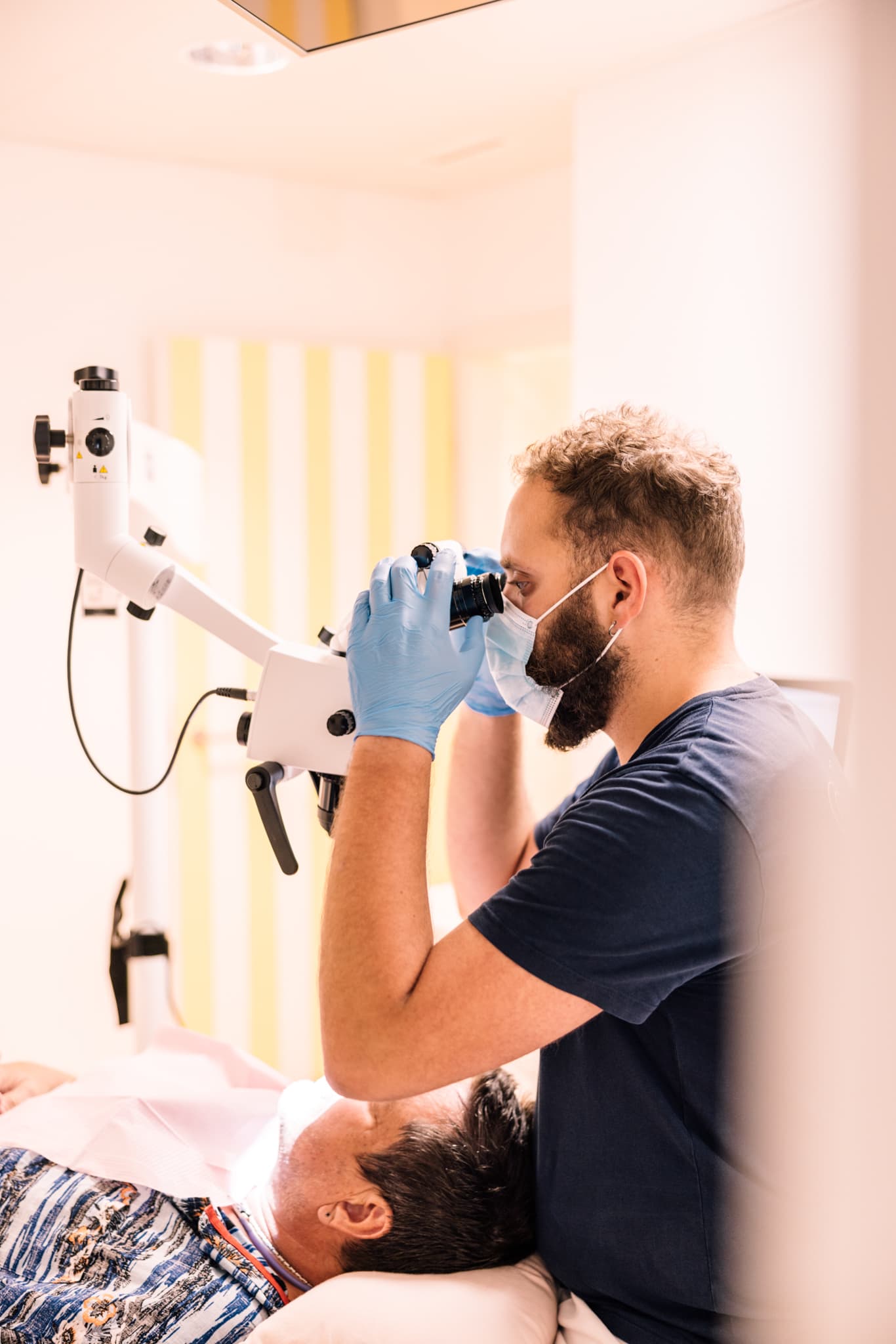Dental crowns
Prices, placement, procedure
A crown is the last option for preserving a tooth that has been damaged or weakened by root canal treatment. It completely covers the visible part of the tooth and is used for severely broken teeth, teeth that have undergone root canal treatment or teeth that need to be covered by extensive fillings.
Dental crowns at CHD
Before treatment begins, all alternative options should be discussed with you. A mould of the tooth is made before treatment to create a perfectly fitting and aesthetic temporary crown, protecting the tooth while the laboratory technician makes the final ceramic crown.
Discover this treatment in video


Rates
| Dental crown | On quotation from 1200.- |
You can pay by invoice and pay in installments.
Fair & transparent prices
We strive to maintain unbeatable value for money: reasonable prices, which have not changed since 2016, for quality of care that has earned us numerous awards:




Advice
Once the crown has been fitted, the dentist will take a verification x-ray, analyse it with you and then refer you to the hygienists to assess the best way to clean the restoration properly to increase its durability. Nothing should be left to chance!
Our dental clinics
Find out more about dental crowns
The price of a ceramic dental crown is approximately 1000CHF. This price may vary depending on a number of factors, such as:
– The position of the tooth in the arch (a front tooth requires more ceramic work than a back tooth)
– The thickness of ceramic required
– The amount of residual tooth (and the quality of this tissue) on which the crown will be placed
– The type of enamel of the other teeth next to the future crown. In order to integrate the crown as well as possible and obtain a natural aesthetic result that is virtually invisible to the naked eye, it is necessary to obtain the same reflections and the same opacity or transparency as the rest of the teeth. In some cases, this work may require an additional session of trial ceramics before the ideal surface qualities are obtained.
This price also includes the cost of the laboratory, to which must be added the “temporary” crown, costing around 140CHF.
In fact, once the decayed tooth has been cut into the final shape that will accept the crown, it becomes necessary to protect it temporarily with a provisional crown. This not only has a functional protective role, but also makes it possible to:
– Shape the gum to avoid the appearance of the margin between the tooth and the crown
– Work on the final shape of the tooth. This stage is referred to as “diagnostic”, as it allows the dentist to create harmony in the shapes and shades of the teeth from the provisional phase onwards
Finally, it should be noted that a single crown is generally slightly more expensive than several crowns, as it needs to blend in perfectly with the smile as a whole and reproduce exactly all the micro-imperfections of the adjacent teeth.
In the case of multiple crowns, it is generally easier to achieve perfect harmony and coherence between them.
A crown is the most suitable treatment for teeth that are extremely broken-down or have already had root canal treatment. When the amount of tooth to be repaired is too great in comparison with the volume of natural tooth remaining, a crown becomes the treatment of choice for obtaining a solid, aesthetic and lasting restoration.
Dental crowns are therefore not indicated on healthy natural teeth, or teeth with moderate decay. They provide an exceptional aesthetic result, making it virtually impossible to detect any difference from a natural tooth.
In the past, crowns had a metal margin, making them particularly visible. Today, we only offer full ceramic crowns, which means there is virtually no risk of a visible crown.
Their robustness also means they can withstand exceptional chewing forces, making them ideal for both posterior teeth(molars, premolars) and anterior teeth(incisors, canines).
– A dental crown involves covering the visible outer part of the tooth with a ceramic cap (crown).
The tooth is therefore still present, and retains its root, but it is simply “made up” on the outside with ceramic.
There is therefore no extraction of the tooth, simply a make-up of the outer part. The patient retains the natural anchorage of the tooth in the bone.
– In the case of an implant, the entire tooth is extracted, i.e. both the outer part and the entire root: there is no longer any natural part of the tooth in the mouth, because it is too broken-down or infected.
A screw (called an “implant”) must then be fitted to replace the root of the natural tooth, and the visible outer part is replaced by a crown.
The dental implant is therefore just a screw, and the crown is bonded on top of this implant.
Some crowns are bonded to the implant, and in other cases they are screwed on: this second solution is usually slightly more expensive, but it is also more practical, as it allows the crown to be unscrewed if necessary and the crown-implant interface to be checked thoroughly.
– A dental bridge replaces one or more missing teeth by relying on the neighbouring teeth. Unlike a crown, which covers an existing tooth, the bridge fills the gap by connecting two abutment teeth. It does not replace the root like an implant and often requires reshaping the adjacent healthy teeth.
A dental crown is usually fitted in 2 sessions:
– An initial appointment during which the dentist prepares and trims the damaged part of the tooth, known as the core, so that its shape can be covered by the crown.
This appointment also allows the shade of the future crown to be determined on the basis of the adjacent teeth. This may involve colour, but also transparency, opacity, reflections, the state of the surface (smooth, grainy, wavy, etc.) or even micro-imperfections that need to be reproduced so that the crown blends in ideally with the other teeth.
The dentist also creates the famous temporary crown, as the core cannot be left “bare” without protection.
Finally, a 3D impression is taken using a scanner, and everything is sent directly to the laboratory by email.
The ceramists, for their part, design the tooth using 3D computer software and then make the crown by milling and manual finishing. All this work is carried out in the Meyrin laboratory.
– At the second appointment, the crown is ready to be tried on in the mouth.
Once it has been approved, the crown is glued in place and a final X-ray is taken to ensure that there is no excess adhesive.
A check-up of the crown is often scheduled in the months that follow.